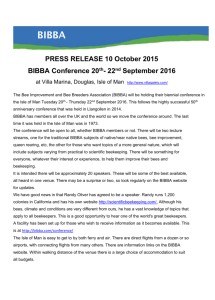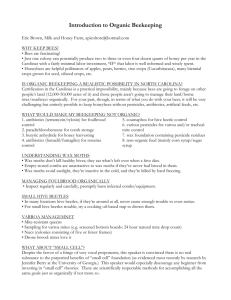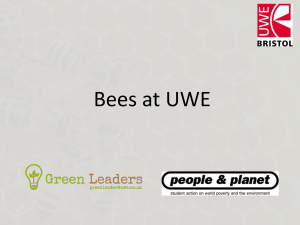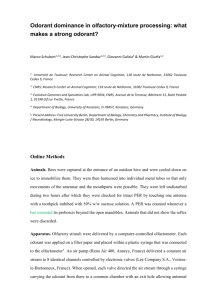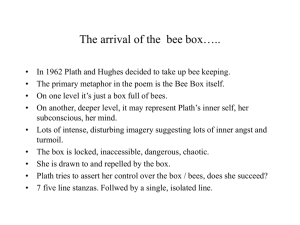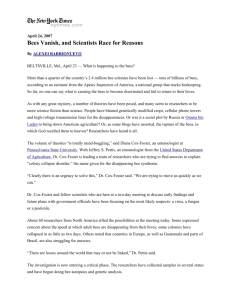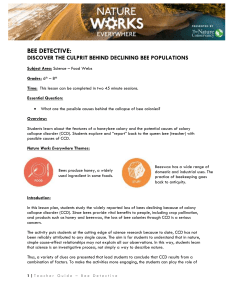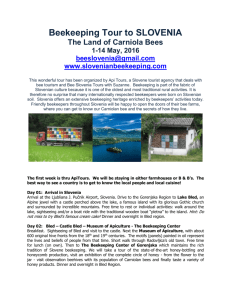Course: BEEKEEPING Course id: 3ORT5I07 Number of ECTS: 6
advertisement
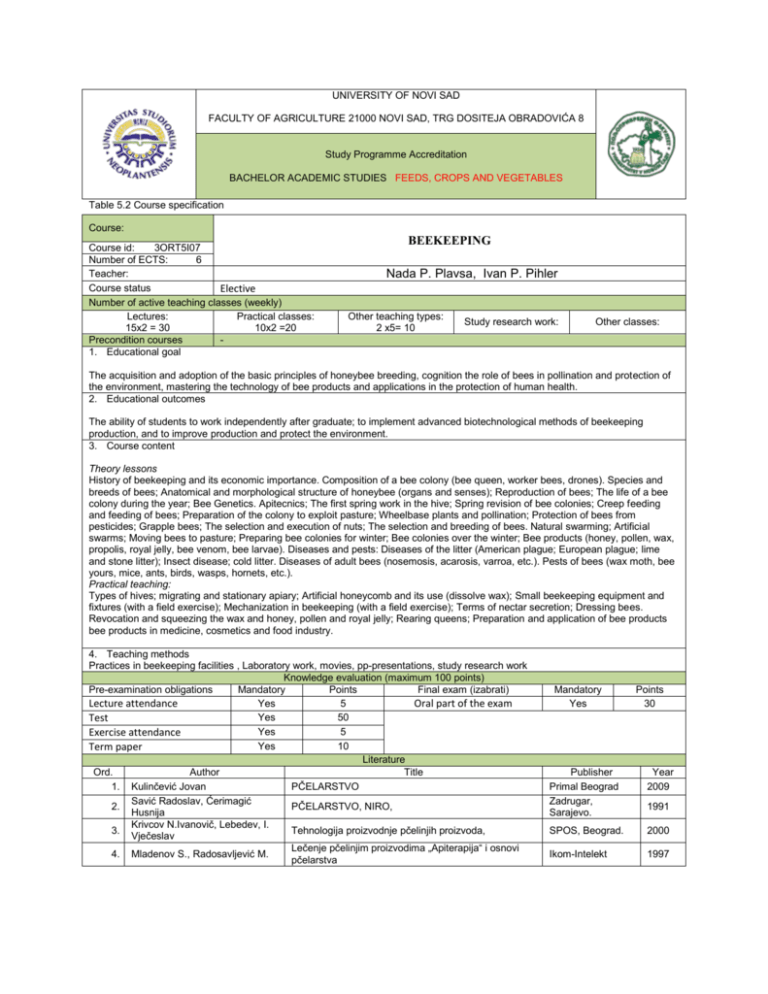
UNIVERSITY OF NOVI SAD FACULTY OF AGRICULTURE 21000 NOVI SAD, TRG DOSITEJA OBRADOVIĆA 8 Study Programme Accreditation BACHELOR ACADEMIC STUDIES FEEDS, CROPS AND VEGETABLES Table 5.2 Course specification Course: Course id: 3ORT5I07 Number of ECTS: 6 Teacher: Course status Elective Number of active teaching classes (weekly) Lectures: Practical classes: 15x2 = 30 10x2 =20 Precondition courses 1. Educational goal BEEKEEPING Nada P. Plavsa, Ivan P. Pihler Other teaching types: 2 x5= 10 Study research work: Other classes: The acquisition and adoption of the basic principles of honeybee breeding, cognition the role of bees in pollination and protection of the environment, mastering the technology of bee products and applications in the protection of human health. 2. Educational outcomes The ability of students to work independently after graduate; to implement advanced biotechnological methods of beekeeping production, and to improve production and protect the environment. 3. Course content Theory lessons History of beekeeping and its economic importance. Composition of a bee colony (bee queen, worker bees, drones). Species and breeds of bees; Anatomical and morphological structure of honeybee (organs and senses); Reproduction of bees; The life of a bee colony during the year; Bee Genetics. Apitecnics; The first spring work in the hive; Spring revision of bee colonies; Creep feeding and feeding of bees; Preparation of the colony to exploit pasture; Wheelbase plants and pollination; Protection of bees from pesticides; Grapple bees; The selection and execution of nuts; The selection and breeding of bees. Natural swarming; Artificial swarms; Moving bees to pasture; Preparing bee colonies for winter; Bee colonies over the winter; Bee products (honey, pollen, wax, propolis, royal jelly, bee venom, bee larvae). Diseases and pests: Diseases of the litter (American plague; European plague; lime and stone litter); Insect disease; cold litter. Diseases of adult bees (nosemosis, acarosis, varroa, etc.). Pests of bees (wax moth, bee yours, mice, ants, birds, wasps, hornets, etc.). Practical teaching: Types of hives; migrating and stationary apiary; Artificial honeycomb and its use (dissolve wax); Small beekeeping equipment and fixtures (with a field exercise); Mechanization in beekeeping (with a field exercise); Terms of nectar secretion; Dressing bees. Revocation and squeezing the wax and honey, pollen and royal jelly; Rearing queens; Preparation and application of bee products bee products in medicine, cosmetics and food industry. 4. Teaching methods Practices in beekeeping facilities , Laboratory work, movies, pp-presentations, study research work Knowledge evaluation (maximum 100 points) Pre-examination obligations Mandatory Points Final exam (izabrati) Yes 5 Lecture attendance Oral part of the exam Yes 50 Test Yes 5 Exercise attendance Yes 10 Term paper Literature Ord. Author Title 1. Kulinčević Jovan PČELARSTVO Savić Radoslav, Ćerimagić 2. PČELARSTVO, NIRO, Husnija Krivcov N.Ivanovič, Lebedev, I. 3. Tehnologija proizvodnje pčelinjih proizvoda, Vječeslav Lečenje pčelinjim proizvodima „Apiterapija“ i osnovi 4. Mladenov S., Radosavljević M. pčelarstva Mandatory Yes Points 30 Publisher Primal Beograd Zadrugar, Sarajevo. Year 2009 SPOS, Beograd. 2000 Ikom-Intelekt 1997 1991
